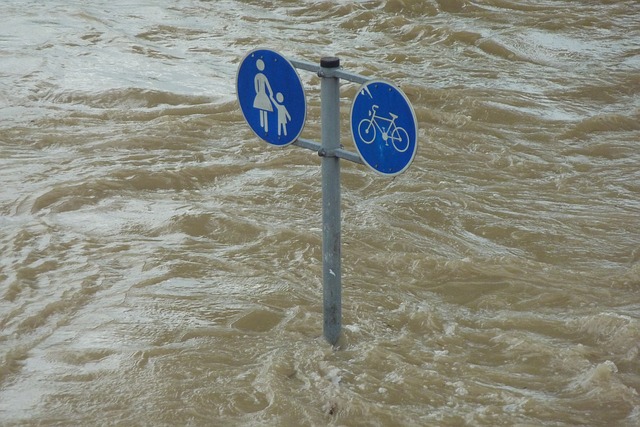 Flooding and Drinking Water
Flooding and Drinking Water
During heavy rainfall or even flooding, the quality of drinking water can be locally affected, and it may be advisable to avoid drinking it. In extreme cases, the sewage system can overflow, releasing various pollutants.
Recently (August / September 2020), rainfall in Avegno, Ticino, led Alertswiss to issue a warning not to drink the tap water, and to avoid using it for cooking and washing.
(SRF, 30.08.2020)
Bacteria, nitrates from manure spread on fields, and other pollutants can be washed from the surface into water bodies or groundwater, causing issues in the water supply weeks or even months later, exceeding acceptable limits. There is often a delay of about a month between heavy rainfall and the detection of increased amounts of pathogens in rivers and lakes, and up to two months for these to appear in groundwater.
Nitrates are partially converted to nitrosamines in the bodies of infants and young children, which can be carcinogenic. However, for older children and adults, nitrate from food does not pose a health risk.
(Swiss Association for Gas and Water)
It is not only pathogens or other natural contaminants, but also pesticides and herbicides that are transported in increased amounts during such events.
A global study examined extreme weather events between 1910 and 2010, finding that heavy rainfall and flooding were the most common events preceding outbreaks of waterborne diseases. More than half of these outbreaks were caused by contaminated drinking water.
Cann KF, Thomas DR, Salmon RL, et al. Extreme water-related weather events and waterborne disease. Epidemiology and Infection. (2013). 131: 671-686
Here, gastrointestinal diseases are usually the result, but Legionella can also cause problems. In some areas, heavy metals can be present in increased amounts after floods or heavy rainfall. Professional water analyses for Legionella, bacteria, and/or heavy metals can be found here.

